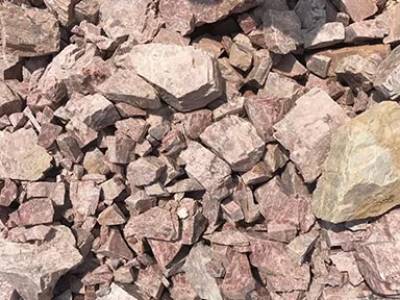Description
Feldspar: The Foundation of Minerals and Modern Materials
Feldspar is not just a mineral; it's a group of rock-forming tectosilicate minerals that make up as much as 60% of Earth's crust. These aluminosilicates, characterized by a three-dimensional framework of linked tetrahedra of silica (SiO₄) and alumina (AlO₄) anions with cations (typically potassium, sodium, calcium, and barium) filling interstitial sites, are ubiquitous and essential to various industries.
Key Properties & Types:
Feldspars are categorized primarily based on their chemical composition and crystal structure, leading to several important types:
- Alkali Feldspars: These contain significant amounts of potassium (K) or sodium (Na).
- Orthoclase (KAlSi₃O₈): A potassium feldspar known for its prominent, often pink or white, cleavage planes. Highly prized in the gemstone and ceramic industries.
- Albite (NaAlSi₃O₈): A sodium feldspar, commonly white or colorless. Important in ceramic glazes and porcelain.
- Perthite: An intergrowth of albite and orthoclase, exhibiting a characteristic layered texture.
- Plagioclase Feldspars: This series features a continuous solid solution between albite (NaAlSi₃O₈) and anorthite (CaAl₂Si₂O₈). The proportion of Na and Ca determines the specific type within the series. Plagioclase feldspars show polysynthetic twinning under polarized light, a diagnostic feature.
- Oligoclase: An intermediate plagioclase feldspar.
- Andesine: Another intermediate plagioclase.
- Labradorite: Known for its iridescent play of colors (labradorescence), a popular gemstone.
- Bytownite: A calcium-rich plagioclase.
- Anorthite: A calcium-end member of the plagioclase series.
Applications:
The diverse properties of feldspars make them indispensable in a wide range of applications:
- Ceramics: Feldspar is a crucial fluxing agent in the ceramic industry, lowering the melting point of clay and promoting vitrification. It's used in the production of porcelain, pottery, tiles, and sanitaryware, enhancing their strength, durability, and aesthetic properties.
- Glass: Feldspar contributes to the clarity, strength, and durability of glass products, serving as a key ingredient in both flat glass and specialty glasses.
- Enamels: It's a vital component in the formulation of porcelain enamels, providing a smooth, glossy finish to metal surfaces.
- Abrasives: Certain feldspars are utilized as mild abrasives in cleaning and polishing applications.
- Gemstones: Some feldspars, particularly orthoclase (moonstone) and labradorite, are valued as gemstones for their attractive colors and optical effects.
- Fillers: Feldspar's finely ground form is used as a filler in various materials, such as paints, plastics, and rubber.
Availability & Sourcing:
Feldspar is a widely available mineral, mined globally in significant quantities. The quality and specific type of feldspar vary depending on the geological location and mining operation.
Conclusion:
Feldspar's abundance, versatility, and unique properties make it an essential raw material for numerous industries. Its importance in modern manufacturing and its significant role in Earth's geology underscore its continuous relevance in both scientific and industrial contexts.
